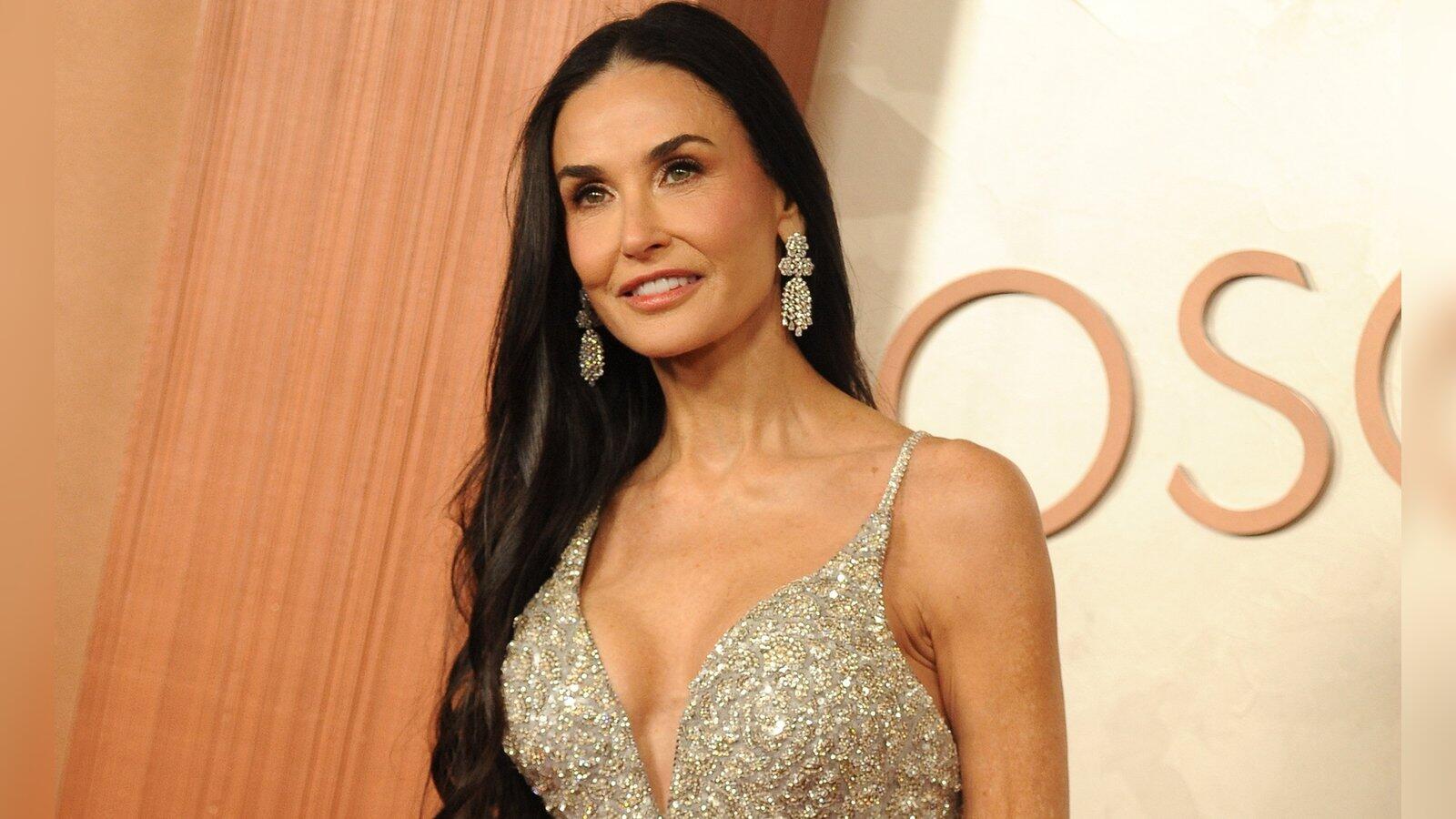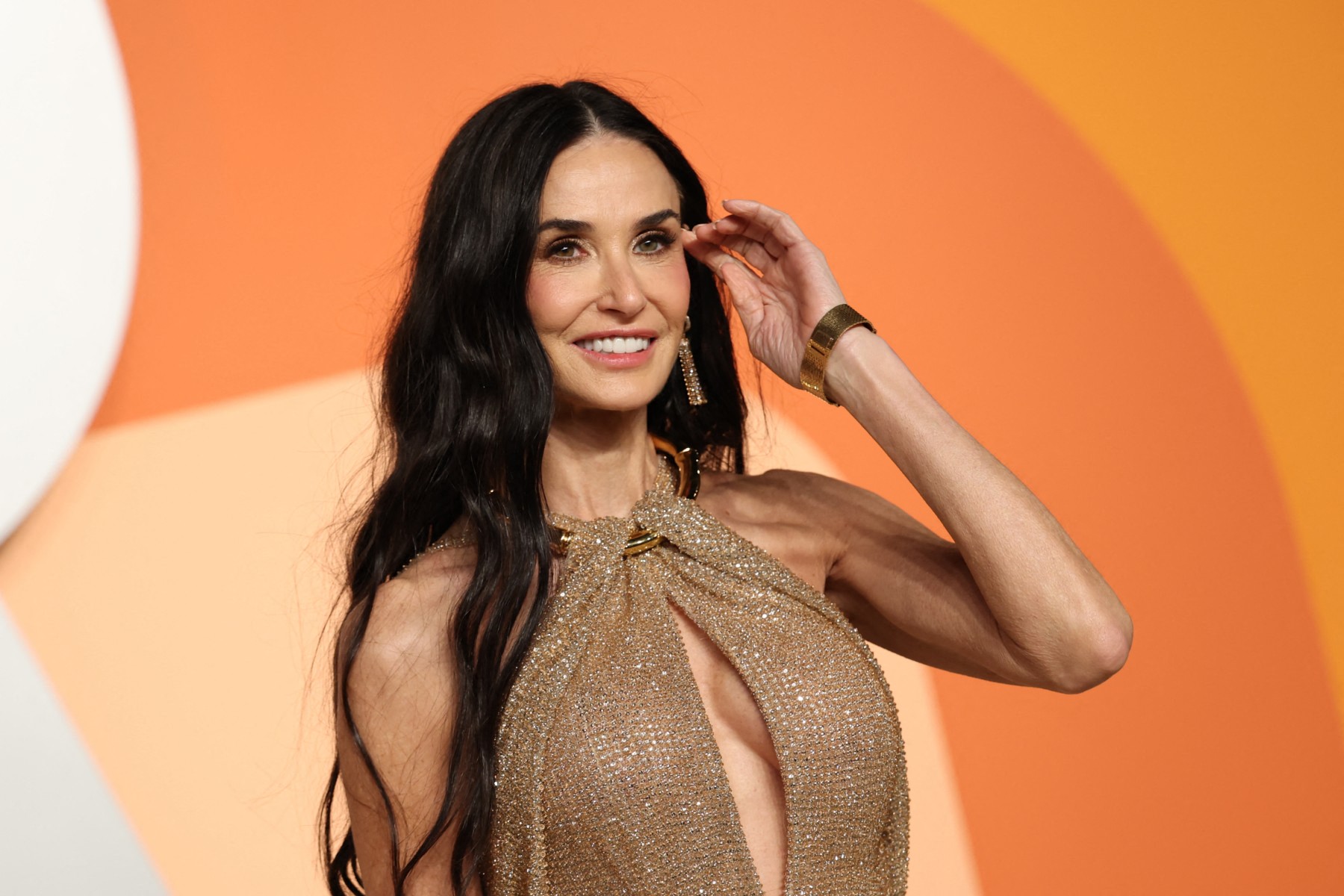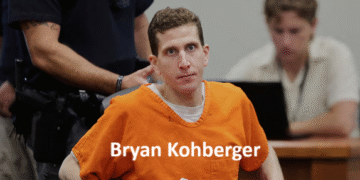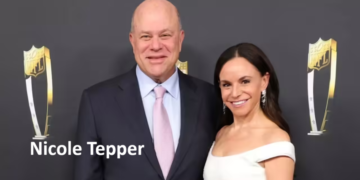Demi Moore stands as one of Hollywood’s most recognizable and influential actresses, whose career has spanned over four decades. From her breakthrough roles in the 1980s to her recent acclaimed performances, Demi Moore has consistently proven herself as a versatile performer who defies industry expectations. Her journey from a troubled childhood to becoming one of the highest-paid actresses in Hollywood is a testament to her resilience, talent, and unwavering determination.
Early Life and Humble Beginnings
Born Demi Gene Guynes on November 11, 1962, in Roswell, New Mexico, Demi Moore’s early life was marked by instability and hardship. Her biological father left before she was born, and her mother, Virginia, struggled with alcoholism while frequently changing partners. The family moved constantly, living in over 30 different homes during Moore’s childhood.
At age 13, Moore discovered that the man she believed to be her father, Dan Guynes, was not her biological parent. This revelation, combined with her mother’s suicide attempts and the family’s financial struggles, forced Moore to mature quickly. She often found herself caring for her younger half-brother and managing household responsibilities while her mother battled addiction.
Despite these challenges, Demi Moore found solace in performing. She participated in school plays and dreamed of becoming an actress, using entertainment as an escape from her turbulent home life. At 16, she made the bold decision to drop out of high school and move to Los Angeles to pursue her acting dreams, supporting herself through various modeling jobs.
Breaking into Hollywood

Demi Moore’s entry into Hollywood began with small television roles in the early 1980s. Her first significant break came with the soap opera “General Hospital,” where she played Jackie Templeton from 1982 to 1984. This role provided her with valuable acting experience and helped her develop the screen presence that would later make her a star.
Her transition to film began with supporting roles in movies like “Blame It on Rio” (1984) and “No Small Affair” (1984). However, it was her involvement with the “Brat Pack” – a group of young actors including Rob Lowe, Andrew McCarthy, and Ally Sheedy – that truly launched her career. Demi Moore appeared in two quintessential Brat Pack films: “St. Elmo’s Fire” (1985) and “About Last Night” (1986), which established her as a rising star in Hollywood.
Career Peak and Iconic Roles
The late 1980s and 1990s marked the golden period of Demi Moore’s career. Her role in “Ghost” (1990), opposite Patrick Swayze and Whoopi Goldberg, became a cultural phenomenon. The film’s famous pottery scene became iconic, and Moore’s performance helped the movie gross over $505 million worldwide, making it one of the highest-grossing films of 1990.
Following “Ghost,” Demi Moore continued to choose challenging and diverse roles. In “A Few Good Men” (1992), she held her own alongside Tom Cruise and Jack Nicholson, playing a determined Navy lawyer. The film was both a critical and commercial success, further cementing her status as a leading actress.
Perhaps her most controversial and talked-about role came with “Indecent Proposal” (1993), where she starred opposite Robert Redford and Woody Harrelson. The film sparked nationwide debates about morality and relationships, with Demi Moore’s character at the center of the ethical dilemma. Despite mixed critical reception, the movie was a box office hit.
Demi Moore continued to push boundaries with “Disclosure” (1994), where she played a sexually aggressive corporate executive accused of harassment by Michael Douglas’s character. The role-reversal aspect of the story was groundbreaking, and Moore’s performance was praised for its complexity and fearlessness.
Her trilogy of hits concluded with “The Scarlet Letter” (1995), though this adaptation received more mixed reviews. Nevertheless, during this period, Demi Moore commanded unprecedented salaries for a female actress, reportedly earning $12.5 million for “Striptease” (1996), making her one of the highest-paid actresses in Hollywood history at that time.
Personal Life and Relationships

Demi Moore’s personal life has been equally scrutinized by the media. Her first marriage to musician Freddy Moore (1980-1985) gave her the surname she would keep throughout her career. Her most high-profile relationship was with actor Bruce Willis, whom she married in 1987. The couple became one of Hollywood’s power couples and had three daughters together: Rumer, Scout, and Tallulah.
Despite their divorce in 2000, Demi Moore and Bruce Willis maintained an amicable relationship, often spending holidays together with their children and Willis’s new wife. This mature approach to co-parenting became a model for other divorced celebrity couples.
In 2005, Demi Moore married actor Ashton Kutcher, who was 15 years her junior. The relationship attracted significant media attention due to their age difference, but the couple appeared happy together for several years before divorcing in 2013.
Challenges and Comeback
The late 1990s and early 2000s saw Demi Moore step back from acting to focus on her family. When she returned to film, the industry had changed significantly, and she struggled to find roles that matched her previous success. Movies like “Charlie’s Angels: Full Throttle” (2003) and “Mr. Brooks” (2007) received mixed reception.
Demi Moore faced personal struggles during this period, including battles with substance abuse and eating disorders, which she candidly discussed in her 2019 memoir “Inside Out.” Her openness about these challenges helped destigmatize mental health issues and addiction in Hollywood.
Recent Work and Legacy

In recent years, Demi Moore has experienced a career renaissance. Her role in the horror film “The Substance” (2024) has been particularly acclaimed, with critics praising her fearless performance and willingness to tackle themes of aging and beauty standards in Hollywood. This role has introduced her to a new generation of fans while reminding longtime admirers of her exceptional talent.
Demi Moore’s influence extends beyond her filmography. She broke barriers for women in Hollywood by commanding equal pay and choosing complex, often controversial roles that challenged societal norms. Her business acumen led her to become a producer, giving her more control over her projects and career trajectory.
Impact on Popular Culture
Demi Moore has left an indelible mark on popular culture. Her iconic short haircut in “Ghost” influenced fashion trends, while her pregnant Vanity Fair cover in 1991 changed how pregnancy was portrayed in media. She paved the way for discussions about women’s rights, equal pay, and the challenges of aging in Hollywood.
Her memoir “Inside Out” became a bestseller and provided insights into the pressures faced by women in the entertainment industry. Demi Moore’s willingness to be vulnerable and honest about her struggles has inspired many and contributed to important conversations about mental health, addiction, and recovery.

Conclusion
Demi Moore remains a fascinating and influential figure in Hollywood. From her challenging beginnings to her rise as one of the most powerful actresses of the 1990s, her journey exemplifies resilience and reinvention. While she has faced personal and professional setbacks, her recent work proves that her talent and relevance endure.
As Demi Moore continues to evolve as an actress and public figure, her legacy as a trailblazer for women in Hollywood remains secure. She demonstrated that female actors could command substantial salaries, choose complex roles, and maintain relevance across different decades. Her story continues to inspire new generations of performers and serves as a reminder that true talent transcends temporary setbacks.
(FAQs) About Demi Moore
Q1 What is Demi Moore’s most famous movie?
Demi Moore’s most famous and commercially successful film is “Ghost” (1990), where she starred opposite Patrick Swayze. The movie became a cultural phenomenon, grossing over $505 million worldwide and featuring the iconic pottery scene that remains one of cinema’s most memorable romantic moments.
Q2 How many times has Demi Moore been married?
Demi Moore has been married three times. Her first marriage was to musician Freddy Moore (1980-1985), followed by her high-profile marriage to actor Bruce Willis (1987-2000), with whom she had three daughters. Her third marriage was to actor Ashton Kutcher (2005-2013).
Q3 What made Demi Moore one of the highest-paid actresses in Hollywood?
During the 1990s, Demi Moore commanded unprecedented salaries for female actors, reportedly earning $12.5 million for “Striptease” (1996). Her box office success with films like “Ghost,” “A Few Good Men,” and “Indecent Proposal” gave her significant negotiating power and helped establish higher pay standards for women in Hollywood.
Q4 Did Demi Moore write a book about her life?
Yes, Demi Moore published her memoir “Inside Out” in 2019. The book became a bestseller and provided candid insights into her childhood struggles, career highlights, relationships, and personal battles with addiction and mental health issues.
Q5 What is Demi Moore doing now?
Demi Moore continues to act and has experienced a career renaissance in recent years. Her performance in “The Substance” (2024) has received critical acclaim, and she remains active in Hollywood while also focusing on her role as a mother and grandmother. She continues to advocate for women’s rights and mental health awareness.
For More Information Visit Bratish Magazine

















































































